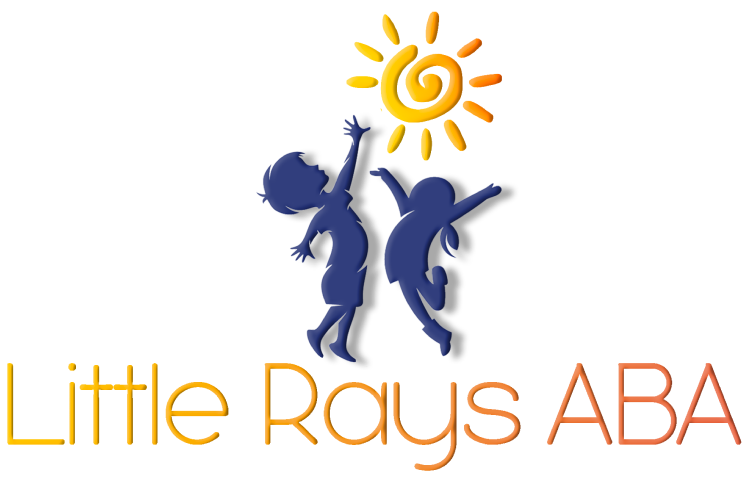Understanding Challenging Behaviors
Root Causes of Challenging Behaviors
Challenging behaviors in individuals with autism spectrum disorder (ASD) can stem from a variety of root causes. These causes are often categorized into three primary areas: biological, social, and those maintained by social consequences.
1. Biological Causes:
Biological factors can include genetic predispositions, neurological differences, and medical conditions. Researchers have identified operant conditioning and medical comorbidities as major contributors to challenging behaviors in individuals with ASD over the past 50 years. For instance, gastrointestinal issues or sleep disturbances can significantly influence behavior.
2. Social Causes:
Social factors may involve difficulties in communication, social interactions, and understanding social norms. Due to their social skills deficits, individuals with autism might exhibit challenging behaviors to express unmet needs or frustrations.
3. Maintained by Social Consequences:
Behaviors maintained by social consequences are often behaviors that are unintentionally reinforced. For example, a child might engage in aggressive behavior to gain attention or to avoid a demanding task. Such behaviors may persist into adulthood due to unintentional reinforcement from their environment or caregivers.
Understanding these root causes is essential in developing effective strategies to manage and mitigate challenging behaviors in individuals with autism.
Impact of Neurodevelopmental Differences
Neurodevelopmental differences significantly impact challenging behaviors in individuals with autism. These differences encompass a range of neurological and cognitive variances that affect how individuals perceive, process, and respond to the world around them.
1. Sensory Processing Issues:
Many individuals with autism experience sensory processing issues, which can lead to overstimulation or under-stimulation. Sensory overload may result in meltdowns or self-injurious behaviors as a way to cope with overwhelming sensory input.
2. Communication Barriers:
Difficulties with verbal and non-verbal communication can make it challenging for individuals with autism to express their needs and emotions, leading to frustration and challenging behaviors as a form of communication.
3. Cognitive Challenges:
Cognitive challenges, such as difficulties with executive functioning, can hinder an individual's ability to plan, organize, and control impulses. These challenges can contribute to behaviors that appear impulsive, oppositional, or non-compliant.
4. Emotional Regulation:
Individuals with autism may struggle with emotional regulation, finding it difficult to manage and express their emotions appropriately. This can result in outbursts, aggression, or withdrawal.
Chronological and developmental assessment of these neurodevelopmental differences can provide insights into the behaviors exhibited by individuals with autism. By recognizing the specific neurodevelopmental challenges faced by each individual, parents, and caregivers can tailor their approaches and strategies to better address and support the child’s needs.
Understanding the root causes and impacts of neurodevelopmental differences is crucial for developing effective interventions and supports for individuals with autism, ultimately leading to better management of challenging behaviors.
Strategies for Positive Behavior
Addressing challenging behaviors in children with autism requires a well-thought-out approach that promotes positive behaviors. This section explores various strategies parents can use to enhance desired behaviors in their children. These strategies are designed to be individualized and are backed by scientific evidence to ensure effectiveness.
Individualized Behavior Strategies
Individualized behavior strategies are tailored to meet the unique needs and challenges of each child. Developing these strategies can foster a sense of pride, personal responsibility, and understanding of expectations. This, in turn, can help reduce anxiety and reactivity, which may lead to challenging behaviors.
When creating individualized strategies, it is important to consider:
- Specific Needs: Each child with autism has unique needs. Tailor interventions to suit these individual requirements.
- Strengths and Interests: Incorporate the child's strengths and interests into the strategies to keep them engaged and motivated.
- Family Dynamics: Take into account the family's routines, values, and cultural background to make the strategies more effective.
Evidence-Based Practices
Using evidence-based practices is crucial when dealing with autism-related challenging behaviors. Two federal laws, the Every Student Succeeds Act (ESSA) and the Individuals with Disabilities Education Act (IDEA '04), mandate the use of research-proven academic and behavioral practices. These laws emphasize the effectiveness of employing strategies that have been validated through research and practice.
Some of the key evidence-based practices include:
Positive Reinforcement
Positive reinforcement is a powerful tool in managing behavior. It involves rewarding desired behaviors to increase the likelihood of their recurrence. Rewards can be in the form of verbal praise, tokens, stickers, or preferred activities.
| Reinforcement Type | Example |
|---|---|
| Verbal Praise | "Great job cleaning up your toys!" |
| Tokens | A token system where tokens can be exchanged for a preferred activity |
| Stickers | Providing a sticker for completing a task |
| Preferred Activities | Allowing extra playtime with a favorite toy |
Providing Choices
Providing choices to individuals with autism can help mitigate behavior problems by giving them some agency within a predictable routine. By incorporating choices into daily activities, individuals with autism can feel empowered and engaged, leading to a more positive behavioral outcome.
| Activity | Choices |
|---|---|
| Snack Time | Choosing between an apple or a banana |
| Playtime | Selecting a preferred toy or game |
| Study Time | Choosing which subject to start with |
Establishing Predictable Routines
Establishing a predictable routine can significantly reduce problematic behaviors in individuals with autism. It brings order to their day and lowers resistance to tasks. Visual supports, such as visual schedules or calendars, can be beneficial in helping individuals with autism understand and follow the routine.
With these individualized and evidence-based strategies, parents can effectively address challenging behaviors in their children with autism, leading to positive behavioral outcomes.
Behavioral Management Techniques
Establishing Predictable Routines
Creating a predictable routine is essential in managing challenging behaviors among children with autism. Consistency in daily activities fosters a sense of security and predictability, which can help reduce resistance to tasks. A structured day can minimize anxiety and behavioral issues by providing clear expectations and reducing uncertainty.
One effective method for implementing predictable routines is the use of visual supports. Visual schedules or calendars serve to enhance understanding and compliance by illustrating the sequence of activities and events throughout the day. These tools can be tailored to fit the individual needs of the child, including pictorial representations of daily tasks, timelines, and transitions between activities.
Benefits of Predictable Routines:
- Reduced problematic behaviors
- Increased adherence to tasks
- Lowered anxiety and stress
- Enhanced understanding of expectations
Visual Supports:
- Visual schedules
- Timelines
- Pictorial calendars
Providing Choices for Empowerment
Offering choices within a structured routine empowers children with autism by giving them a degree of control over their activities. This strategy can significantly improve cooperation and engagement, producing more positive behavioral outcomes.
Allowing children to make choices, even small ones, can foster a sense of agency and reduce feelings of helplessness. For instance, giving a child the option to choose between two tasks, select a snack, or decide on a break activity can improve their compliance and reduce behavioral problems. Incorporating choices throughout the day will engage the child and promote independence.
Examples of Providing Choices:
- Choice of tasks (e.g., "Do you want to do math or reading first?")
- Selection of snacks or meals
- Decision on break activities (e.g., "Do you want to draw or play with blocks?")
By establishing predictable routines and providing choices, caregivers can create a supportive and empowering environment for children with autism, ultimately reducing challenging behaviors.
Positive Reinforcement in Behavior Management
Positive reinforcement is a crucial strategy in behavior management for individuals with autism. It involves rewarding desired behaviors to increase the likelihood of their recurrence.
Importance of Positive Reinforcement
Positive reinforcement effectively increases desired behaviors and reduces challenging behaviors in individuals with autism. This approach capitalizes on the principles of operant conditioning, which is a well-studied behavioral theory identifying that behaviors followed by positive outcomes are more likely to be repeated.
Through positive reinforcement, individuals with autism can learn replacement behaviors and coping strategies. For instance, parents can encourage more constructive communication methods by consistently rewarding a child for using words instead of aggressive actions to express frustration.
Types of Reinforcements
Several types of reinforcements can be effectively used to manage challenging behaviors in autism. These can range from social rewards to tangible items, ensuring they align with individual preferences and motivations.
| Type of Reinforcement | Description |
|---|---|
| Verbal Praise | Positive feedback given verbally, like "Great job!" or "Well done!" |
| Tokens | Symbols or stickers that can be collected and exchanged for a reward |
| Preferred Activities | Allowing the individual to engage in a favorite activity, like playing a game or reading a book |
| Tangible Rewards | Physical items like toys, snacks, or other preferred objects |
Implementing positive reinforcement effectively requires understanding the individual needs and triggers of a child with autism. Caregivers can then tailor the rewards to suit specific behavioral goals, thereby fostering an environment that encourages positive behavior change.
Little Rays ABA is Florida’s go-to provider for families seeking expert support in managing challenging autism behaviors. With a compassionate team and evidence-based techniques, they create personalized plans to help children develop positive behaviors and stronger communication skills.
If you're ready to approach difficult behaviors with confidence, contact Little Rays ABA today and discover how their tailored ABA therapy can make a lasting impact.
Addressing Specific Challenging Behaviors
Aggression and Self-Injury
Aggression and self-injury are among the most challenging behaviors observed in individuals with autism. According to a survey of 2327 individuals on the autism spectrum, over 40% engaged in both aggression and self-injurious behavior. These behaviors can manifest for various reasons, often due to difficulties in communication, sensory sensitivities, or attempts to escape from a demanding situation.
| Behavior | Percentage of Individuals |
|---|---|
| Aggression and Self-Injury | 40% |
| Self-Injury, Aggression, and/or Destructiveness | 59% |
Aggression towards others can include hitting, biting, or other forms of physical violence. Self-injurious behavior (SIB) includes actions like head-banging, biting oneself, or scratching. These behaviors can escalate and become more severe over time, affecting the individual and their caretakers.
Understanding the root causes of these behaviors is essential. They often arise as a means to escape a situation, gain attention, or access preferred items. Strategies to address these behaviors should be individualized and may include behavioral interventions, communication training, and environmental modifications.
Functional Behavior Analysis
Functional Behavior Analysis (FBA) is a vital tool for identifying the underlying causes of challenging behaviors in individuals with autism. FBA involves examining the antecedents (what happens before the behavior), the behavior itself, and the consequences (what happens after the behavior) to determine why a behavior is occurring.
The FBA process typically involves several steps:
- Identify Problem Behaviors: Clearly define and describe the challenging behaviors.
- Gather Data: Observe and record instances of the behavior, noting the antecedents and consequences.
- Hypothesize Function: Determine the likely function of the behavior (e.g., to gain attention, escape a demand, or access a preferred item).
- Develop Interventions: Based on the identified function, create interventions that teach alternative behaviors and modify antecedents and consequences to reduce the challenging behavior.
| FBA Component | Description |
|---|---|
| Antecedents | Events preceding the behavior |
| Behavior | The problem behavior itself |
| Consequences | Events following the behavior |
By conducting an FBA, caregivers, and professionals can develop targeted strategies to reduce challenging behaviors and enhance the individual's quality of life. For example, teaching communication skills to request a break instead of engaging in aggression or providing sensory breaks to address sensory sensitivities can be effective interventions.
Understanding the function behind the behavior is crucial for implementing successful behavior management strategies. With the appropriate support and interventions, individuals with autism can learn more adaptive ways to meet their needs, reducing challenging behaviors and improving overall well-being.
Managing difficult behaviors in children with autism requires patience, understanding, and the right support. ABA therapy and supporting services provide structured strategies to help children develop positive behaviors and communication skills. If you're looking for expert guidance to navigate these challenges, explore local providers today and discover how ABA therapy can create meaningful progress for your child.
Support for Caregivers
Caregiver-Mediated Interventions
Caregiver-mediated interventions have proven effective in managing challenging behaviors in autism. These interventions aim to equip parents with the tools and knowledge necessary to address and mitigate difficult behaviors in their children.
Specific models such as Research Units in Behavioral Intervention (RUBI), Prevent-Teach-Reinforce for Families (PTR), and An Individualized Mental Health Intervention for ASD (AIM HI) focus on providing caregivers with access to high-quality training.
These interventions typically involve:
- Identifying the Function of Challenging Behavior: It is crucial to understand what triggers certain behaviors and their function.
- Developing Function-Based Interventions: Tailoring interventions to address specific causes of behavior.
- Teaching and Reinforcing Appropriate Behaviors: Encouraging positive behaviors to prevent future occurrences of challenging behavior.
Research supports the effectiveness of these methods. By empowering caregivers, they can implement strategies consistently and effectively, fostering a more supportive environment for their children.
Reduction of Caregiver Stress
Addressing the challenging behaviors of children with autism can be stressful for parents. Combining behavioral interventions with stress-reduction programs has shown to be beneficial.
Programs like Acceptance and Commitment Therapy (ACT) and Mindfulness-Based Stress Reduction (MBSR) have been shown to reduce parental stress and enhance the execution of parenting skills.
Effective strategies to reduce caregiver stress include:
- Online and Telehealth Delivery: Offering remote training and consultations to make interventions more accessible.
- Providing Childcare and Respite Care: Giving parents breaks and time to recharge.
- Flexible Appointment Times: Accommodating parents' schedules to reduce logistical burdens.
- Strengthening Informal Support Networks: Encouraging support among family and friends to create a stronger support system.
Integrating these stress-reduction strategies helps caregivers maintain their well-being while effectively managing their children's behaviors.
| Intervention Type | Key Features | Benefits |
|---|---|---|
| Research Units in Behavioral Intervention (RUBI) | High-quality training for caregivers | Reduces challenging behaviors |
| Prevent-Teach-Reinforce for Families (PTR) | Customizes interventions based on behavior functions | Increases effectiveness |
| An Individualized Mental Health Intervention for ASD (AIM HI) | Addresses both emotional and behavioral needs | Holistic approach |
| Acceptance and Commitment Therapy (ACT) | Reduces stress, improves coping mechanisms | Enhances parenting |
| Mindfulness-Based Stress Reduction (MBSR) | Focuses on mindfulness practices to lower stress levels | Promotes mental well-being |
| Online and Telehealth Delivery | Remote access to training and resources | Increases accessibility |
| Providing Childcare and Respite Care | Offers breaks for caregivers | Allows time for self-care |
| Flexible Appointment Times | Accommodates varying schedules | Reduces logistical stress |
| Strengthening Informal Support Networks | Builds a robust support system among family and friends | Creates a supportive environment |
By implementing these caregiver-mediated interventions and stress-reduction strategies, parents can confidently address the challenging behaviors associated with autism, improving both their child's quality of life and their own.
Sources:
https://www.autismspeaks.org/tool-kit-excerpt/helpful-strategies-promote-positive-behavior
https://pmc.ncbi.nlm.nih.gov/articles/PMC11017782/
https://pmc.ncbi.nlm.nih.gov/articles/PMC9324526/
https://raisingchildren.net.au/autism/behaviour/understanding-behaviour/challenging-behaviour-asd
Unlock Your Child's Potential with Expert ABA Therapy!
At Little Rays ABA, we provide compassionate, evidence-based ABA therapy to help children with autism thrive. Our personalized approach fosters growth in communication, social skills, and independence.
Get In Touch With Us Today to Get Started With ABA Therapy!
Related Posts
MENU
GET IN TOUCH
7117 San Salvador Dr Boca Raton, FL 33433
3200 Collins Ave Miami Beach, FL 33140





